Buoyancy
Buoyancy is the property that an object has that allows it to float or rise to the surface of a fluid (a liquid or a gas) as it is immersed in that fluid.
In general Byouancy is related to the specific gravity of an object, it's density, its surface area, and the relative density of the object and the fluid it is immersed in.
A table of densities of different substances will give you an idea of which substace will float or sink when immersed in a fluid.
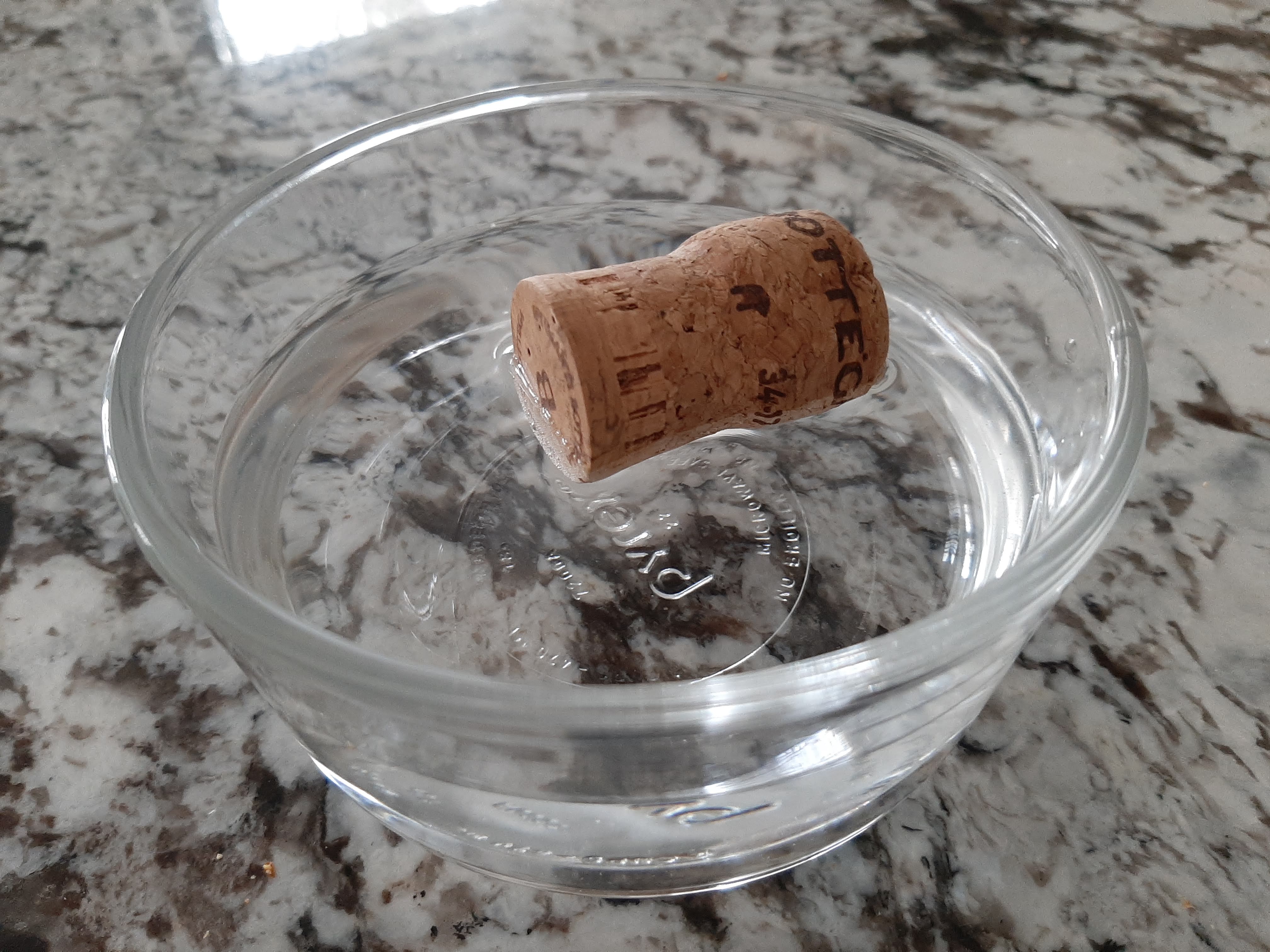
Picture of a cork floating in water
Archimede's Principle of Buoyancy states that when an object is immersed in water (or generally speaking in any ideal fluid), it experiences an upward push or buoyant force from the bottom towards the top. This buoyant force opposes the force of gravity or weight of a partially or fully immersed object.
As the depth of a liquid or gas increases, the pressure increases, because the weight (or force of gravity) of the overlying fluid on top of the object aslo increases. This means that, the pressure at the bottom of an object submerged in a fluid is greater than the pressure acting the top of the object.
Therefore the pressure at the bottom of a column/container of fluid is greater than at the top of the column/container. The difference in pressure results in a net upward force on the object. The magnitude of the force is proportional to this difference in pressures.
This pressure difference is equivalent to the force of gravity on the displaced volume of the fluid (or the volume of the object if it is totally siubmerged).
.jpg)
The above picture shows a toy floating on the surface of the water in a pool.
The density of the toy is almost equal to the density of water, the Force of Gravity is nearly balanced out by the Buyoant Force. Therefore the toy floats.
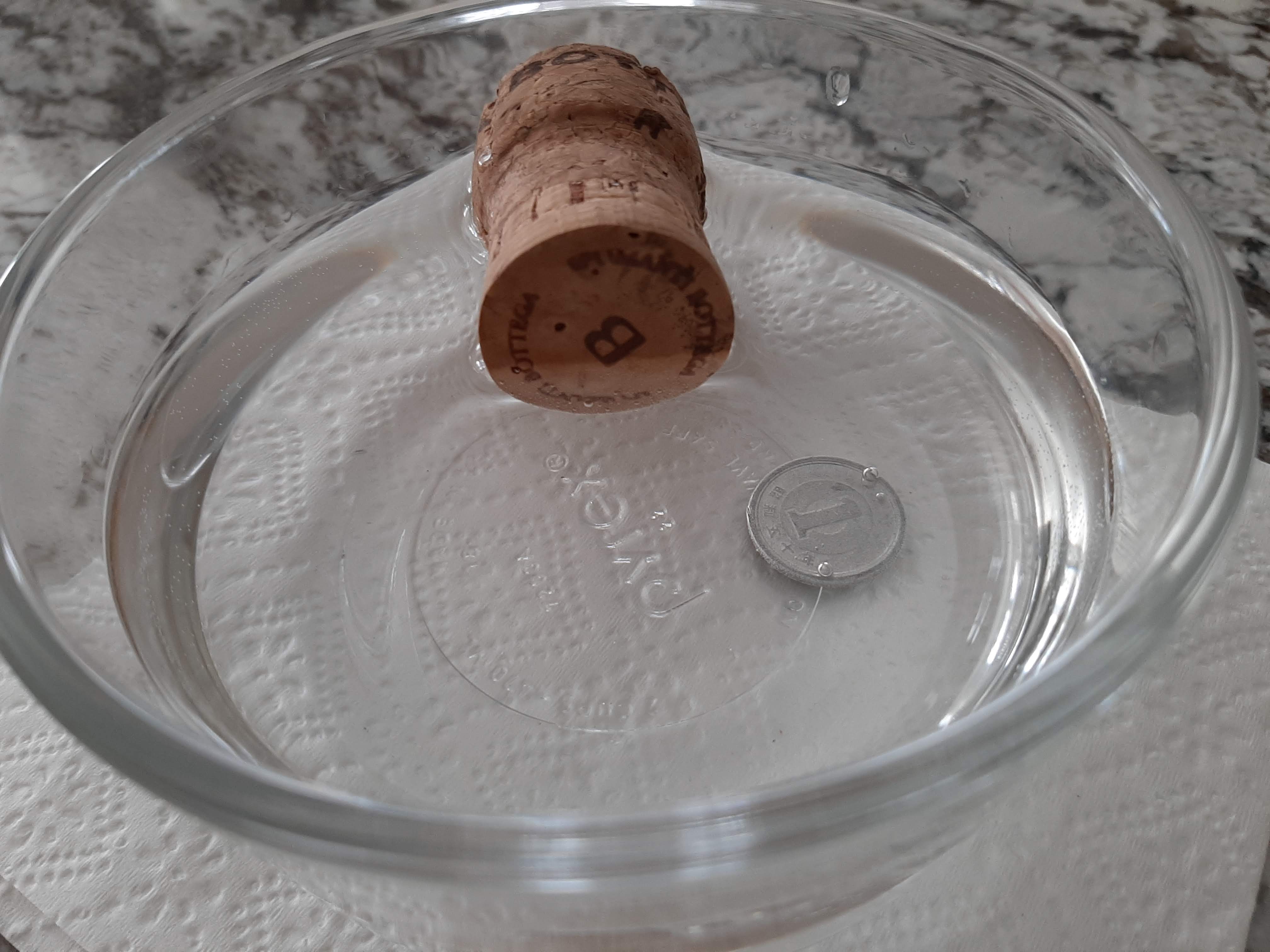
In the above picture a cork is floating in a dish of water but an aluminum coin is sitting at the bottom of the dish.
Why does the coin sink and the cork float?
Hint: Go to the link Densities of Common Substances for the clue to find the answer.
Activity: Explain how a water buoy like the one shown below works.
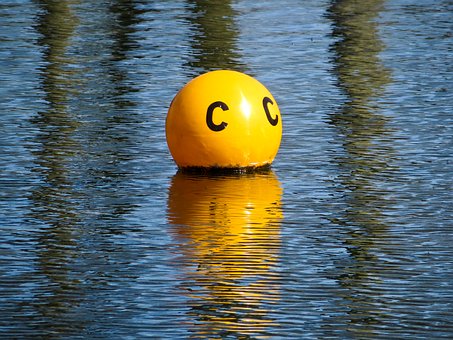
Eureka:
It is said that Archimede's discovered this principle when he noticed that the level of water in the tub he was about to take a bath in rose exactly to the amount of water displaced by the volume of his own body.
Excited as he was about the discovery he had so suddenly made, he precipitously took to the streets of Syracuse running around (naked as he was), yelling "Eureka"!! Which in Greek means "I found it"!
Therefore the displacement of water is a great method to find the volume of irregular solids.
Here is an example:
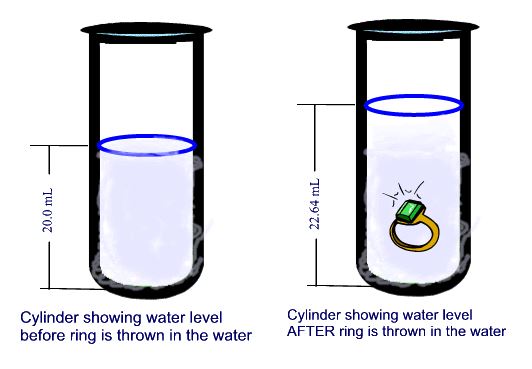
Examine the above pictures. What is the volume of the ring?
Activity:
The images below illustrate examples of applications of buoyancy in a gas like air. Can you explain how they work?
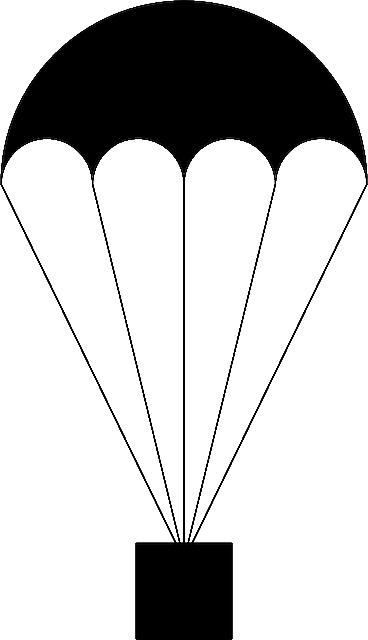
1. A Parachute

2. A Hot Air Balloon


